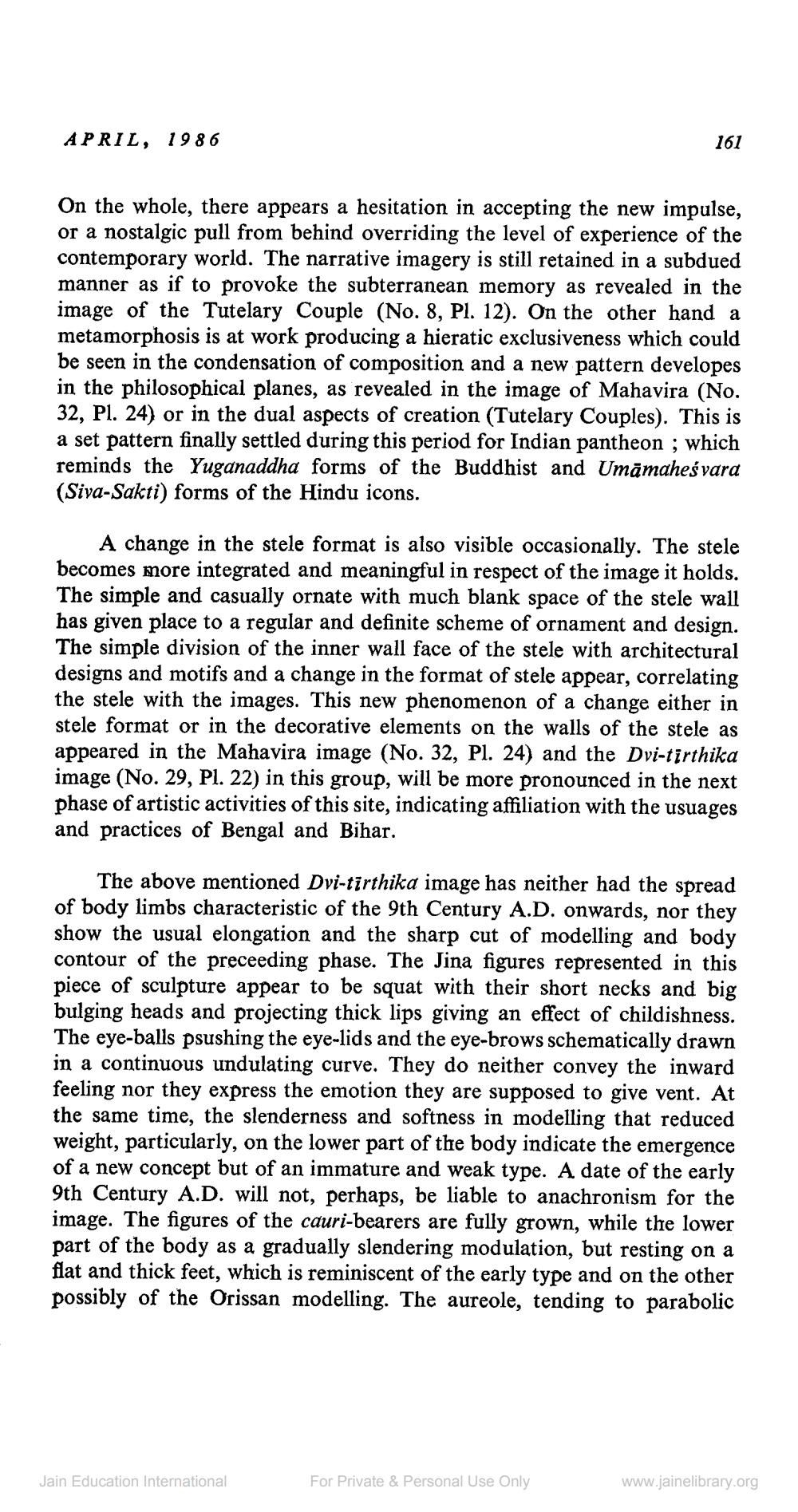________________
APRIL, 1986
On the whole, there appears a hesitation in accepting the new impulse, or a nostalgic pull from behind overriding the level of experience of the contemporary world. The narrative imagery is still retained in a subdued manner as if to provoke the subterranean memory as revealed in the image of the Tutelary Couple (No. 8, Pl. 12). On the other hand a metamorphosis is at work producing a hieratic exclusiveness which could be seen in the condensation of composition and a new pattern developes in the philosophical planes, as revealed in the image of Mahavira (No. 32, Pl. 24) or in the dual aspects of creation (Tutelary Couples). This is a set pattern finally settled during this period for Indian pantheon; which reminds the Yuganaddha forms of the Buddhist and Umamahes vara (Siva-Sakti) forms of the Hindu icons.
161
A change in the stele format is also visible occasionally. The stele becomes more integrated and meaningful in respect of the image it holds. The simple and casually ornate with much blank space of the stele wall has given place to a regular and definite scheme of ornament and design. The simple division of the inner wall face of the stele with architectural designs and motifs and a change in the format of stele appear, correlating the stele with the images. This new phenomenon of a change either in stele format or in the decorative elements on the walls of the stele as appeared in the Mahavira image (No. 32, Pl. 24) and the Dvi-tirthika image (No. 29, Pl. 22) in this group, will be more pronounced in the next phase of artistic activities of this site, indicating affiliation with the usuages and practices of Bengal and Bihar.
The above mentioned Dvi-tirthika image has neither had the spread of body limbs characteristic of the 9th Century A.D. onwards, nor they show the usual elongation and the sharp cut of modelling and body contour of the preceeding phase. The Jina figures represented in this piece of sculpture appear to be squat with their short necks and big bulging heads and projecting thick lips giving an effect of childishness. The eye-balls psushing the eye-lids and the eye-brows schematically drawn in a continuous undulating curve. They do neither convey the inward feeling nor they express the emotion they are supposed to give vent. At the same time, the slenderness and softness in modelling that reduced weight, particularly, on the lower part of the body indicate the emergence of a new concept but of an immature and weak type. A date of the early 9th Century A.D. will not, perhaps, be liable to anachronism for the image. The figures of the cauri-bearers are fully grown, while the lower part of the body as a gradually slendering modulation, but resting on a flat and thick feet, which is reminiscent of the early type and on the other possibly of the Orissan modelling. The aureole, tending to parabolic
Jain Education International
For Private & Personal Use Only
www.jainelibrary.org




